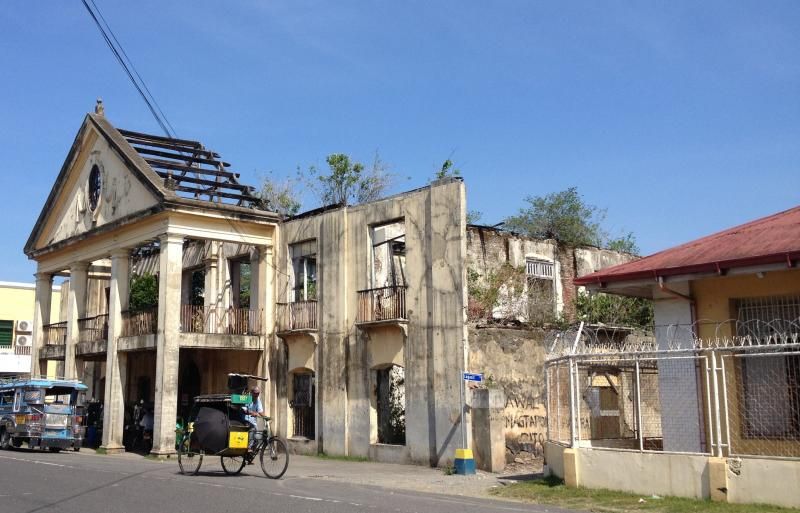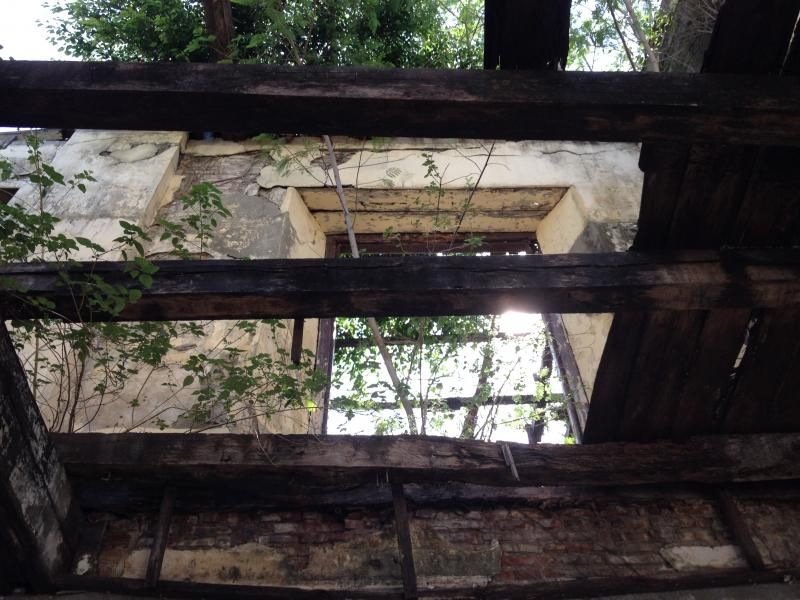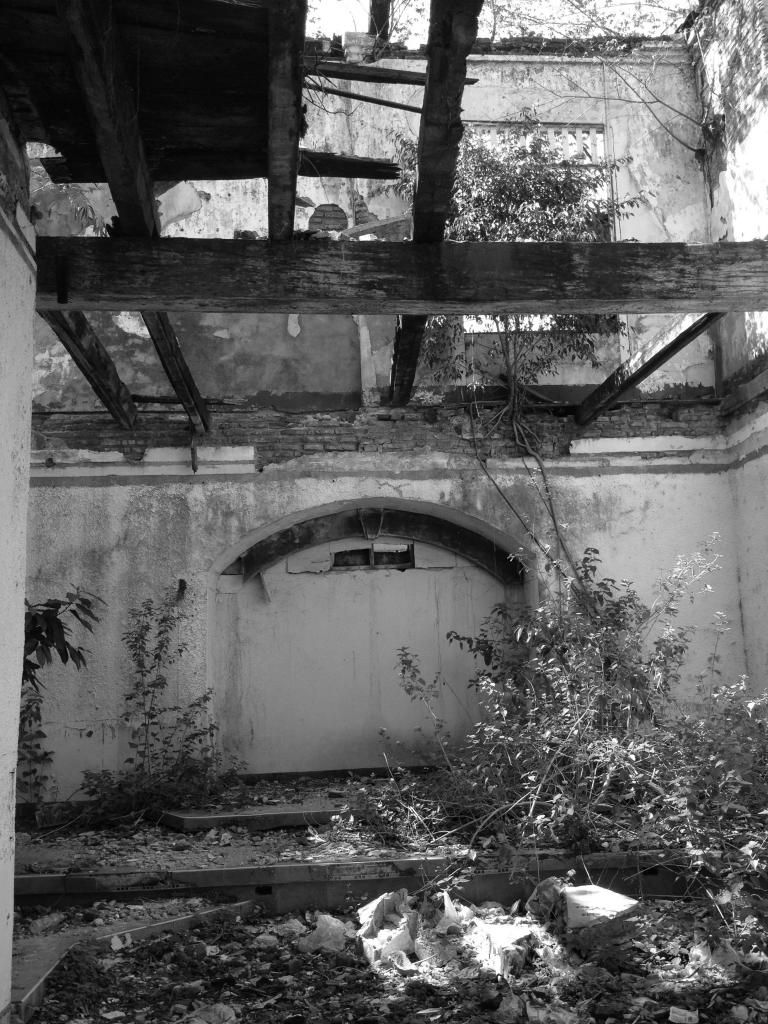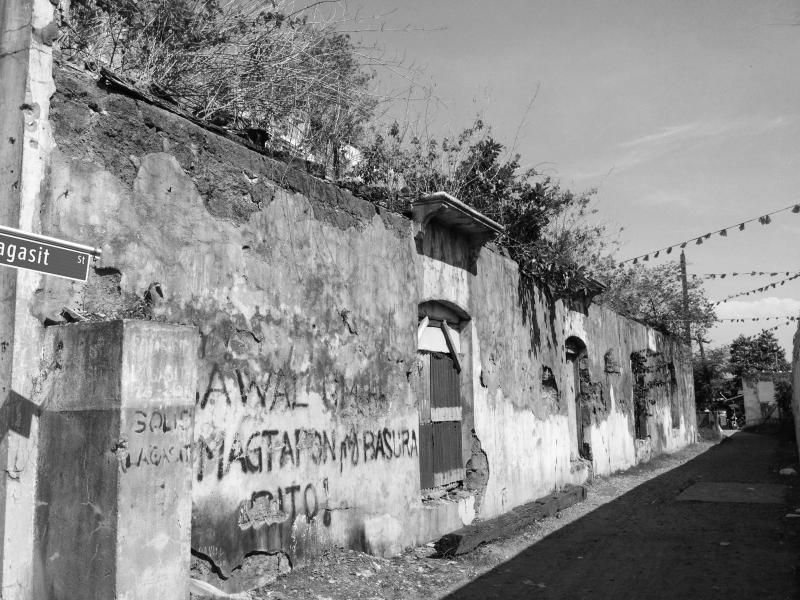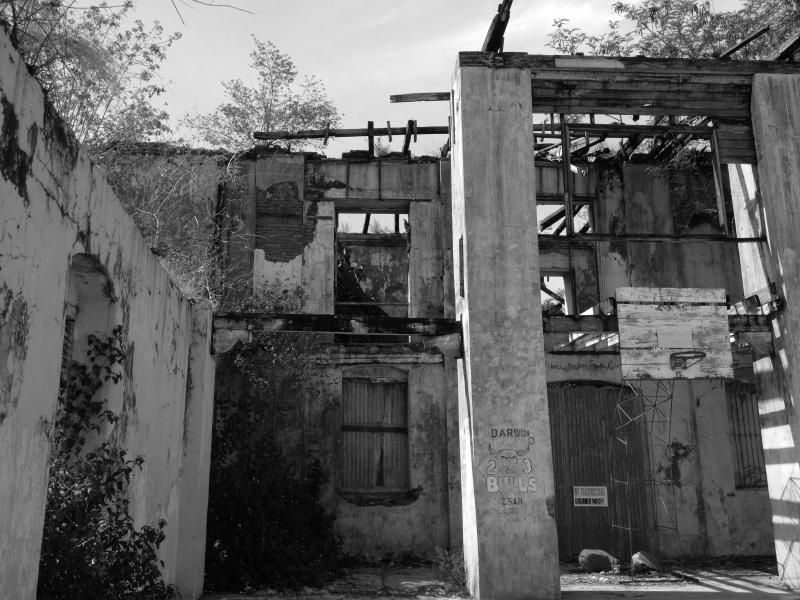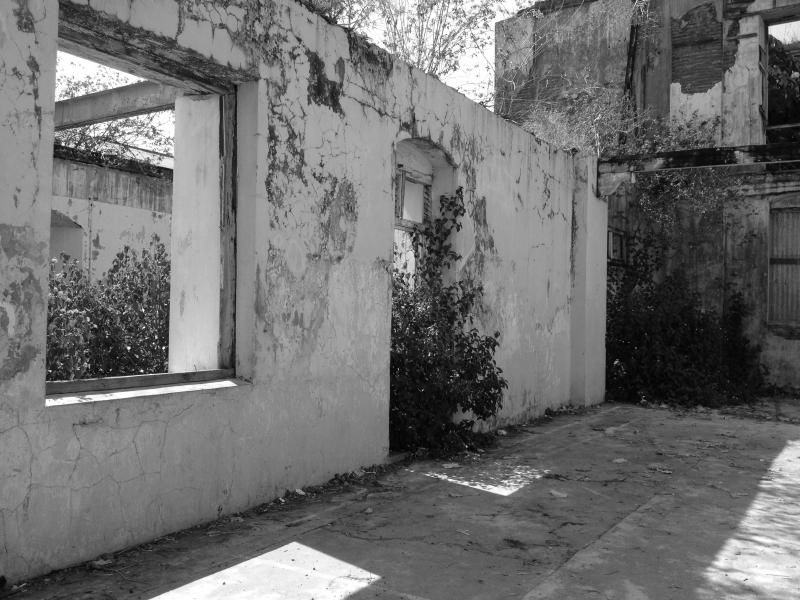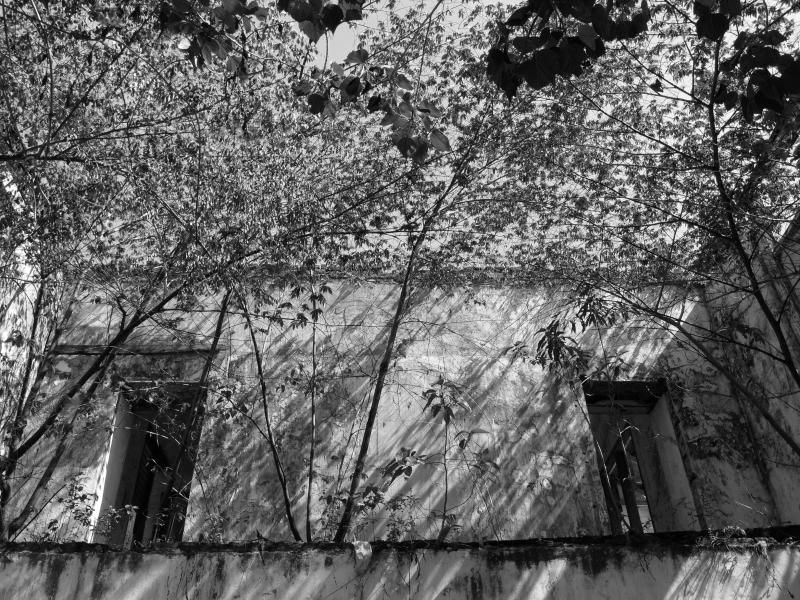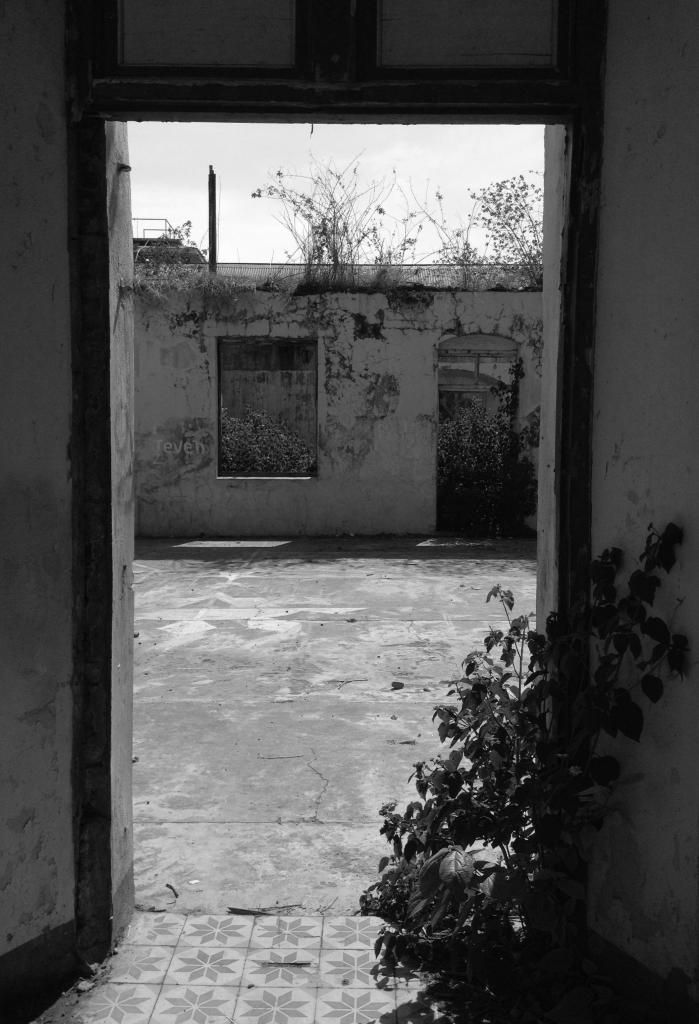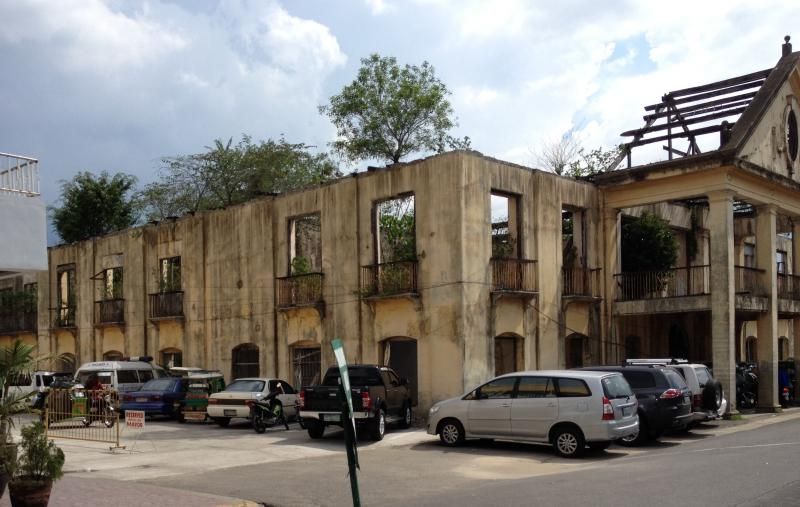My trip to Lingayen Panagsinan was an official business, naturally I didn't have the time to explore the place as I would have wanted to but I managed to make a very short side-trip when I saw a haikyo structure in the middle of the busy capital. The Casa Real is a historical building seated to another heritage structure, the Pangasinan Provinicial Jail. Its sorry state is appalling, if you only knew the history of the building.
Pangasinan Provincial Jail
Casa Real facade
Casa Real literally means "royal house", built in 1840s and one of the first public buildings to be constructed with brick. The alcalde-mayor (functions as governor AND magistrate) resided and held office here. Later on, it was called the Gobierno, in 1886 when the position of Gobernador Civil was created to perform the executive function of the Alcalde Mayor and the latter retained his judicial function only.
During revolution, the Spanish soldiers and the Voluntarios Locales (native recruits of the Spaniards who fought the Katipuneros) holed out at the Casa Real. On June 29, 1898, the Pangasinan Katipuneros planned to capture Lingayen by taking Casa Real. They secretly meet in the evening in Brgy. Domalandan and crossed the river to the Baraca St. but were detected prematurely and got massacred. This street is now called Heroes St.
On February 16, 1901 Judge William Howard Taft and his three commissioners formally organized Pangasinan as a civil province, Lingayen remained the capital municipal because of the existence of provincial buildings there, Casa Real retained its capitol function.
In 1919, the capitol moved to its current location, near Linagayen beach, and Casa Real was used as a public elementary school for about three to four years before it became a Regional Trial Court.
could this be one of the classrooms?
During World War II, the Japanese used the building as their office. After the war, when the new Capitol building needed extensive repair because of the damage inflicted by the American naval bombardment, the provincial offices had to move back to the Casa Real until the repair work was done.
The remaining planks reminds me of an Inari shrine tori
Surviving several earthquakes and the bombings of WWII, it was declared a National Historical Landmark by the National Historical Institute in 2002, with 95% of its original materials intact. But in 2008 super typhoon Cosme ripped off a part of its roof and looters saw the chance to steal ballustrades, wooden floor planks, doors and windows. The municipal government offices occupying it, like Sangguniang Bayan, and DSWD, vacated the place and it became an empty shell.
The Pangasinan Heritage Society, Inc. (PHSI) was granted permission to clean up the building and protect it from further vandalism while waiting for restoration. But after a year, PHSI ran out of funds to sustain the protection of the building and it was again vandalized by thieves who yanked out the remaining doors, windows and iron grills.
Several appeals were made to restore the building. In 2010, Governor Amado Espino pledged to restore it. The PHSI and Provincial Engineering took the remaining wooden materials for safekeeping. In January 2012, Congressman Leopoldo Bataoil (Pangasinan, 2nd district) agreed to allocate part of his pork barrel to restore Casa Real and the provincial jail. Then we all know what happened when the PDAF scandal blew up and now I don't know what the fate of this historical structure would be.
From trial court to basketball court?
I hope it won't be a haikyo for too long, It is a witness to many lives of different generations and a survivor of harsher times, it deserves to be restored to its old glory.
Source:
http://heritageconservation.wordpress.com/2006/12/10/casa-real-lingayen/
http://www.sunstar.com.ph/baguio/local-news/2012/01/15/pangasinan-restore-old-casa-real-carsel-200708

